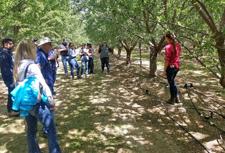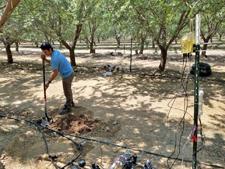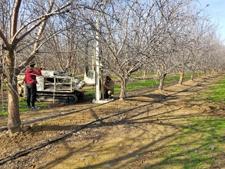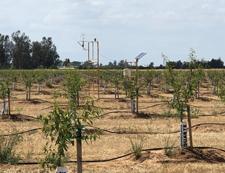Precision irrigation management for optimizing limited water in young and mature almond orchards
Summary:
Almonds are currently the largest irrigated crop in California with over 1.2 million acres. Almond production in California has unique water issues, including the need for post-harvest irrigation and the presence of different almond varieties within the same orchard that might respond differently to irrigation management. Improving water productivity of almond production can be achieved through site-specific irrigation scheduling by variety throughout the entire growing season. In addition, increased profits for California almond growers and enhanced groundwater sustainability can be achieved through implementation of best management practices such as regulated deficit irrigation.
Investigator:
Isaya Kisekka, Twitter: @UCDIrrigation
Assistant Professor, Dept. of Land, Air, and Water Resources and Department of Biological and Agricultural Engineering
UC Davis
Project description:
Frequent droughts in California coupled with recent changes in water policy legislation such as the Sustainable Groundwater Management Act (SGMA) and Irrigated Lands Regulatory Program (ILRP) strengthens the incentive for farmers to adopt water conservation practices and technologies. This project emphasizes sustainable irrigation management during the pre- and post-harvest periods in different varieties and ages of almond trees.
Currently almonds are the single largest irrigated crop in California with over 1.2 million acres. Almond production in California has unique water issues, including the need for post-harvest irrigation and the presence of different almond varieties with shifted growth stages and water needs in the same orchard to establish effective pollination.
Typical almond orchards are arranged in rows that alternate between a high-yielding Nonpareil variety and one or more pollinator varieties. Traditionally, farmers have set up their irrigation systems to irrigate the entire orchard the same and cannot independently irrigate the different almond tree varieties within the orchard. Since each almond tree variety experiences critical growth stages at different times, they may also have different water needs and should be managed independently.
In addition, California’s almond acreage increased by seven percent between 2016 and 2017, indicating that there is increased acreage of young almond orchards that are particularly sensitive to water limitations. Therefore, the objectives of the study are to evaluate 1) site-specific irrigation management of different varieties of almond trees in the same orchard, 2) effect of regulated deficit irrigation management on almond yield, quality, water productivity, novel orange warm, and 3) crop water use and crop coefficients of different ages of young almond orchards.




